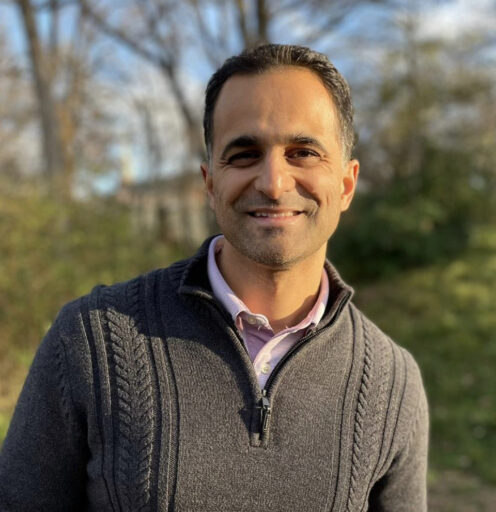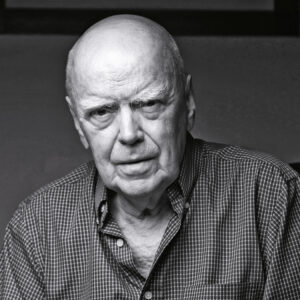We recently spoke with author Amit Majmudar about his new Slant book, Twin A: A Memoir
Q: Most of your books, so far, have not been very autobiographical. Even some of the poems that seem to be drawn from your personal life are actually persona poems. What was it like writing directly from your personal life for the first time?
A: Exceedingly difficult. Now I know why I avoided it. With imaginative work, or imaginative work that takes off from lived or read experience (like realist fiction or historical fiction), I can bluff my way through, as it were. A relaxation comes over me when the subject matter is deflected somehow from myself—it’s the safety of anonymity, though the work goes out under my own name—that gets reflected in ease of composition. With Twin A, I had nowhere to hide, and imaginative bluffing was precisely what I wasn’t there to do—I conceived the book as a letter of a few pages, originally, recording what happened to my son in his infancy. So I ended up spending years getting this right, or at least as right as I could get it. I have written far longer novels in a matter of months. This thing took ten years of trial and error.
Q: Yet there are still imaginative elements in the book, aren’t there? The prose account is peppered with fables and poems.
A: Right, the result of my years of tinkering and accretion and writing around the subject in various ways. In 2016’s Dothead, for example, you can find a poem like “The Boy Who Couldn’t Grow Up,” which relates to these events, and in 2020’s What He Did in Solitary you can find a poem like “Altarpiece,” which also, technically, ought to have gone in Twin A. Those got published separately and collected separately because back then—as recently as three years ago!—I didn’t expect to ever publish this memoir, primarily because I didn’t feel it “fit” the genre as it exists today (and it doesn’t, but that’s why I treasure indie publishers like Slant Books). I embedded these poems and fables and theological reflections in various places in the narrative to give variety to what might otherwise have been a wearing litany.
Q: Regarding those theological reflections, what would you present to readers as the takeaway from your family’s experience?
A: I would resist framing the book in those terms—“takeaway” is too closed, too pat, too utilitarian an approach. I don’t claim to have solved the problem of why bad things happen to good people, or to justify God’s ways to man. If anything, the contemplative “climax” of the book exalts the importance of equipping yourself against suffering rather than striving, inevitably in vain, to “understand” it. So maybe that’s the takeaway: Spend your energy on self-fortification rather than theodicy. I imagine the book may prompt readers into their own reflections on these perennial questions.
Q: How did the book change over the long process of its composition and revision?
A: Lots of ways. The section and chapter divisions were not structured in their current, mathematical “five and nine” way. The poems and fables and some of the reflective passages were missing. The latter parts that describe some more recent events, obviously, were missing (they hadn’t happened yet). Life continued while I was trying to finish my account of it. Overall, the best part of waiting this long, and letting it grow by accretion, was being able to hand it to my son to read and greenlight before publication—I wouldn’t have published this book if he had asked me not to.
Q: What were your literary influences when writing this book? Or does a book drawn this directly from life not really work the same way as other kinds of literary writing?
A: All forms of writing have a lineage. The combination of prose and verse is a crucial formal point. Historically, I’d pinpoint Dante’s La Vita Nuova, which provides an epigraph for the book, and gave me the idea of including a poem and then including my own commentary on the poem, and how it relates to my life at the time of composition. I do that in a few places and it’s very much an echo of that work of Dante’s. Boethius, in the Consolation of Philosophy, did something similar combining prose narrative and poems, and he was the exemplar that I think Dante was following (Boethius’s book was very popular in the Middle Ages). Among contemporaries, I know Christian Wiman, one of my favorite living writers, does this with his memoiristic work, too. The inclusion of fables for the purpose of illumination has an ancient model in Indian Hindu treatises and Plato’s Timaeus and Rumi’s Mathnawi, but the use of parables and side stories and anecdotes is a very common, perhaps universal, feature of religious discourse. I remember I audiobooked Abelard’s Historia Calamitatum at one point a few years ago and reflected on how this kind of book, recounting a private calamity and reflecting on it, has a very, very long pedigree.
Q: Many readers who pick up this book may be new to your work. Where do you recommend they go after Twin A?
A: Well, Twin A is probably the best introduction to my body of work so far because it encompasses a lot of what I do in one contained space. If you liked some of the poems, I recommend you check out one of the four poetry collections; if you like the personal bits, I wrote a novel many years ago, The Abundance, which takes its inspiration from family life among Indian-Americans and draws from lived experience (not necessarily my own—it’s written from the perspective of a grandmother). If you like the philosophical passages, I just published my first book of nonfiction essays, Black Avatar, this spring. If you like the fables or the storytelling, I have a vivid historical novel, Partitions, which is also a ghost story…. Little known fact, I also publish a parallel body of English-language work in India—there are some mythological and historical novels originally published there that represent some of my best work. Two new ones are coming out there this fall.
Q: The book was written by a father for a son—yet at the time of the book’s events, you yourself were a physician in training and later a practicing physician. How did that place within the medical world change how you experienced those events, or how you wrote about them?
A: In the moment, the worry is the worry, the fear is the fear, the grief is the grief. The “doctor” identity feels light, unreal, irrelevant. Even the subject matter—pediatric congenital heart disease—is notoriously complex and intimidating to medical students, and most doctors in practice never think about it because it’s such a small, arcane, hyperspecific bailiwick within medicine. So even the details of the disease were a bit unfamiliar to me at the time; I had never actually seen a patient who had what my son was diagnosed with prenatally. In any case, the doctor-identity has always been a superficial one with me; the practice of radiology involves little personal interaction, it’s basically really complex anatomical pattern recognition, which is why AI will probably swallow, or at least drastically alter, this field in the near to medium term. Of course, even patient visits are now happening remotely, and clinical medicine, too, may well be AI-assisted and then AI-mediated in time. AI-guided robotic surgery will be a thing, too, though the timeline is probably farther out on that. It’s Radiology that will be the first medical specialty to be nearly completely AI-driven, since it is entirely digitized already. My self-image remains what it was before I ever entered college or medical school or residency—that of a writer and reader, a literary person. Maybe AI will do writing better than me, too, but hopefully a “bespoke” book like Twin A will be beyond its abilities, precisely because this book is so unlikely, so formally aleatory, so poetically and theologically idiosyncratic, so messily human.





